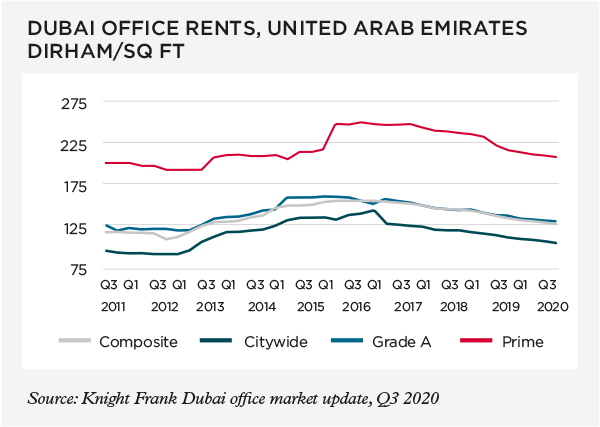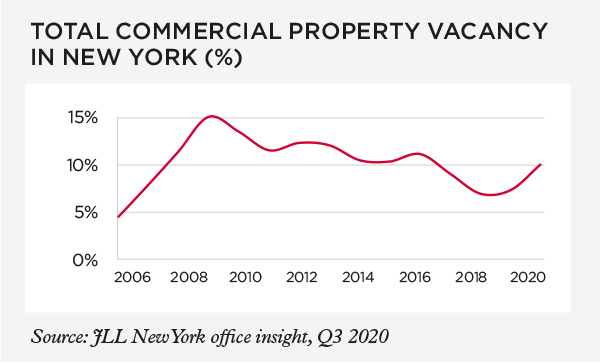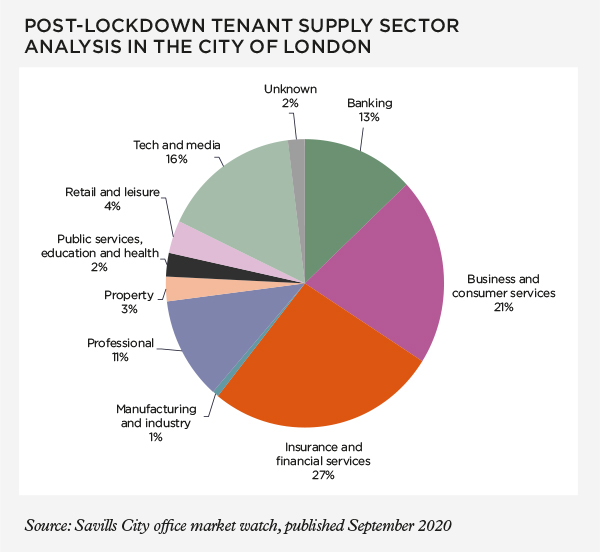What corporates and employees want from their workplaces now is very different from the start of 2020. Will the status quo return, or are office destinations due a fundamental rethink?
by Mark Faithfull
Back in January 2020, Facebook was announcing plans to hire 1,000 staff to fill its new £1bn London HQ. By May, Twitter, Facebook and financial services company Square had pivoted to allow some of their staff to work remotely indefinitely, with Facebook CEO Mark Zuckerberg suggesting that half the company's employees will be based from home in the next ten years.
With the Covid-19 pandemic transforming the world of work, 77% of CEOs say they will continue to build on their current use of digital collaboration and communication tools, and 73% believe that remote working has widened their available talent pool, according to the KPMG 2020 CEO outlook: Covid-19 special edition report, published in September 2020, which includes the views of 1,300 CEOs around the world.
"The pandemic has given CEOs a clear sense of what is possible in the future of work," says Nhlamu Dlomu, global head of people, KPMG International, in the report. "Organisations have, as a result of sheer necessity, made decisions faster, collaborated better, adopted new technologies faster and even eradicated long-standing hierarchies and silos. But the challenge now is to sustain those improvements over the long term."
Whether these are short-term reactions, or this is the trigger point for a profound rethink of work locations, what will be the real estate implications for the globe's business centres? After all, flexible working is nothing new. A report published in June 2020 by research firm Gartner, which surveyed 400+ HR leaders, 300+ finance leaders and 4,000 US employees, titled Future of work trends post-Covid-19, finds 30% of employees were already working from home at least some of the time before Covid-19 struck. That number has since jumped as high as 80%.
"The way people view and use corporate real estate will certainly change"
The resultant model is likely to see more flexible and output-based work. At the heart of this will be connection enablers such as videoconferencing software, with Microsoft chief executive Satya Nadella reporting in a blog that Microsoft saw two years' worth of digital transformation in two months, and debate growing around whether the office sector will enter irreversible decline.
China and Hong Kong in first waveAs the region first to be hit by Covid-19, China and Hong Kong have seen phased office re-entry, with the structure of space aligned with social distancing regulations. The option for more remote work will potentially help corporations adjust workspaces for social distancing and health requirements in the short term.
"The way people view and use corporate real estate will certainly change," says Anthony Couse, CEO at real estate advisor JLL Asia Pacific. "However, this won't spell the end of the office. Ultimately, it is people who are the end-users of real estate. Is this real estate's Uber moment? No."
"The Grade-A vacancy rate is also expected to see a marked increase over the coming year"
However, the trend towards shorter leases has accelerated as office users exercise caution and avoid making long-term decisions. So far, occupiers approaching the end of their leases are the primary drivers of reductions, whittling down lease terms as part of an effort to mitigate future unknowns. According to global property consultancy JLL, in Hong Kong, an average office lease is three years. In the UK, it's six. In the US, it fell 15% in the first five months of 2020 to seven years.
Office leasing momentum in Hong Kong remained weak in Q3 2020, according to a report by adviser CBRE. While leasing activity picked up 36% on the previous quarter, this represents just half the quarterly five-year average. Leasing transactions by banking and finance firms fell by over 50% quarter-on-quarter and total vacant space reached 7.8 million sq ft, a level last seen in 1999. Overall, rents fell 3.9% on the previous quarter, the report says.
Selected markets: Dubai, Paris, London and New YorkIn the year to Q3 2020, with average office rents in Dubai falling by 6.5% and prime office rents down by 4.7%, companies were looking to take advantage of weaker market conditions to upgrade their occupational space while mindful of increasing total spend, according to property adviser Knight Frank's Dubai office market update.
"The Grade-A vacancy rate [corporate office specification to a high quality] is also expected to see a marked increase over the coming year, as the vast majority of supply scheduled for delivery in 2021 is Grade-A quality," says the report. Currently there are estimated to be 25 active projects within Dubai due for completion by 2024, valued at US$7.6bn, which will represent significant additional space for the market to absorb and suggest that a number of schemes may be spiked or delayed.

In the UK, adviser Savills' Market in minutes: UK commercial report shows that commercial investment volumes reached £7.2bn in Q3 2020, up 55% on Q2 2020, although the second quarter was one of the lowest ever recorded. In comparison to the two-year quarterly average, Q3 2020 was approximately half 'normal' levels. However, while shopping centre and leisure sectors have seen prime yields move out by a full percentage point since the end of 2019, London West End offices at 4.0% and City offices at 3.75% are at the same level as autumn 2019.
By contrast, in Paris even before the Covid-19 crisis, vacancies were increasing and have since been amplified, with 3.3 million sq m vacant by the end of Q3 2020 (+10% on Q2 2020). CBRE reports that by 1 October 2020, the vacancy rate in the Greater Paris region had reached 5.6%. Vacant space is also increasing in business district La Défense, at 7.5%, following the completion of Alto Tower. Probable future supply has grown slightly, the report says, due to the "increased number of future vacancies and the accumulation of ready-to-launch supply".
"We believe offices will re-emerge, but not in the same format"
In New York, the situation looks potentially more concerning. One Vanderbilt – the second tallest Manhattan skyscraper – recently opened adjacent to Grand Central Terminal in a private partnership model the city hopes to replicate in the area. But the 1,427 metres building's debut coincided with a decline in leasing prices, thanks to the shift to working from home, and the city's biggest construction boom since the 1980s. Sub-letting and short-term renewals now account for more than 70% of leases amid a downturn that has precipitated soaring unemployment.
And, according to JLL figures, "Approximately 3.1 million sq ft of leases in New York closed in Q3 2020, representing a 44.9% decrease on the same period last year, while an additional 3.3 million sq ft of sub-lease inventory hit the market."

The average lease term in Q2 2020 at the city's largest office landlord, SL Green, slid to 4.3 years from 10.1 years in the year prior, and while One Vanderbilt is 67% leased on long-term leases at more than US$100 per sq ft, and Facebook's August leasing of the former Farley post office building adjacent to Penn Station and Madison Square Garden suggests there is demand for the very best workspaces, older stock may face difficulties.
Prospects for 2021 and beyond"We believe offices will re-emerge, but not in the same format," says Elaine Rossall, head of UK offices research, JLL. "Also, the picture is not the same everywhere, because some markets like London have experienced densification pre-Covid, driven by hot-desking and flexible working, while countries such as Germany have retained more space per employee because of regulations. German regulations and cultural norms mean that German offices tend to allocate significantly more space per employee than markets such as the UK.
"What we are establishing is that people do want some work from home – perhaps one or two days a week – but they also miss the collaboration and interaction of being in the office. So the likelihood is that there will be a balance. But does this mean a smaller office footprint? Not necessarily, because the office will still have to cope with peak demand days and it may be that, if people are not commuting every day, staff will be prepared to travel further. So the catchment for a central business district (CBD) office may actually expand."

Elaine notes that flexible workspace providers are struggling but believes that there may well be an increased focus on this going forwards, as corporates wrestle with changes. She says they may use flexible spaces to trail new, regional locations, while a thriving start-ups sector will mostly target flexible space.
"For CBDs, what we are likely to see is a flight to quality," says Elaine. "Employers are going to be looking for spaces that allow flexible work, collaborative spaces and more focus on wellbeing, both physical and mental. These are not necessarily new trends, but Covid-19 has accelerated them."
A look forward
In reality, the ultimate shape of the global office sector is hugely uncertain. Digital technology advances and workplace behavioural changes, catalysed by the pandemic, suggest that people no longer need an office hub to work from and yet many employees have mixed feelings when it comes to their long-term work arrangements.
Meantime, real estate categories are blurring. British department store John Lewis and European shopping centre giant Unibail-Rodamco-Westfield are among those converting retail space to co-working; European hotel company AccorHotels aims to establish 1,200 flexible working spaces across its estate by 2022; and a number of flexible workspace specialists continue to expand, despite the travails of WeWork.
This paints an increasingly complex picture and, speaking at the MIPIM Urban Forum in Paris in September 2020, Séverine Chapus, head of development, major mixed-use projects at BNP Paribas Real Estate, predicted the rise of a network of 'office points' encompassing not only corporate head offices but also co-working spaces close to where employees live, plus work from home, according to a MIPIM blog. This aligns with the wider 15-minute city concept of localised neighbourhoods conceived by Professor Carlos Moreno and a central tenet of Paris' urban strategy.
In many ways, this also reflects a back to the future vision of people working, living and playing closer to home and it may be this, even more than Covid-19, that remodels cities for the 21st century.